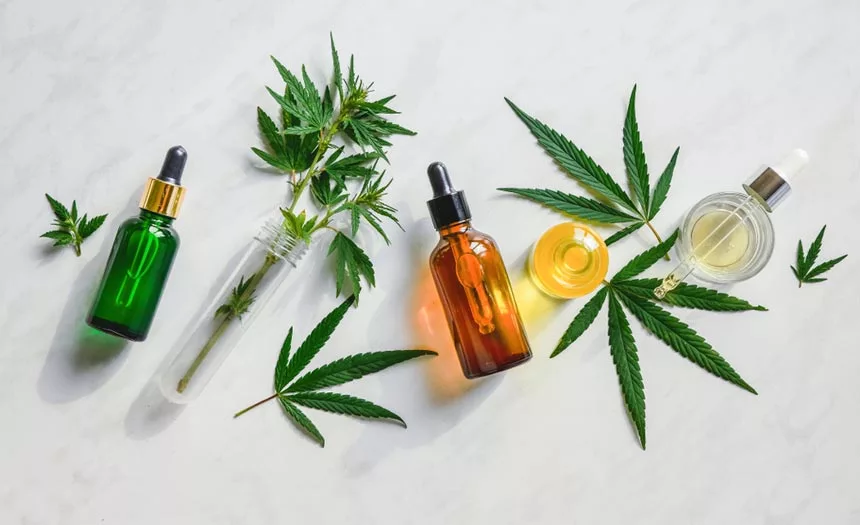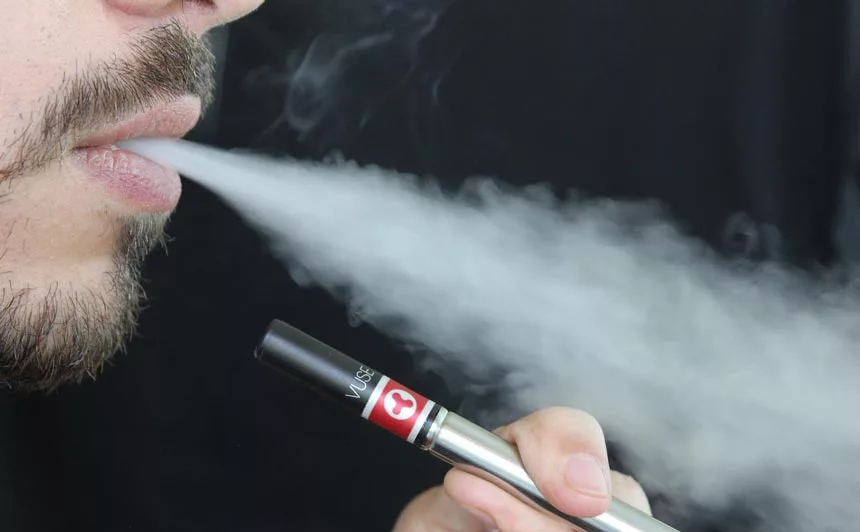THC-O Acetate: More Trouble Than It’s Worth?
Table of Contents
- THC-O Acetate: More Trouble Than It’s Worth?
- What Is THC-O?
- THC-O Today: A Growing Issue
- How Is THC-O Made?
- The Legal Status Of THC-O
- THC-O vs Other Cannabinoids
- The Effects, Risks, And Side Effects Of THC-O
- The Dangers of Unregulated THC-O Products
- THC-O Dependency Risks
- Identifying The Signs Of THC-O Addiction
- THC-O Withdrawal Symptoms
- Quitting THC-O: Effective Treatment Methods
- FAQs About THC-O Acetate
- Say No To THC-O: Kick the Addiction with Our Help
- Medically Reviewed By
Researchers have a long way to go before fully understanding cannabis. Tetrahydrocannabinol (THC) and cannabidiol (CBD) are the most popular among the 500+ chemical compounds found in weed. Still, non-natural cannabinoids continue to surface, such as THC-O acetate.
This synthetic compound is a trending recreational drug known for its potent psychoactive properties and borderline hallucinatory effects. As a hemp derivative, its legal status is controversial, though some states are taking steps to prohibit it.
Tetrahydrocannabinol-O-acetate (also called THC-O, ATHC, or THC-Oa) remains largely under-researched. Little is known about its long-term effects on physical and mental health, and harmful additives are a very real risk.
But THC-O products are becoming increasingly popular. Are they safe? What are the use dangers? How is this recreational drug even made? Does it pose dependency and other health risks?
You’ll find all the answers and more below. Ready? Let’s jump in.
What Is THC-O?
THC-O acetate is a synthesized cannabinoid usually derived from hemp plants. Scientifically speaking, it’s an acetate ester of THC, known as O-acetyl-Δ9-THC.
It can only be manufactured in a lab via extremely complex and dangerous chemical processes. The resultant substance is a highly potent THC isolate that looks like a thick, brown liquid.
Also known as the “spiritual cannabinoid,” it’s considered to be around three times stronger than conventional THC (delta-9). Anecdotal evidence suggests the effects are somewhat psychedelic, akin to taking a small dose of lysergic acid diethylamide (LSD) or psilocybin mushrooms.
The History Of THC-O
Although THC-O has only recently gained popularity, the United States military began studying its effects decades ago. During the Edgewood Arsenal experiments, they observed how the compound eroded muscle coordination in canines; twice as much as conventional THC.
Fast forward to 1978. The Drug Enforcement Administration (DEA) discovered THC-O in a makeshift lab in Jacksonville, Florida. Agents found a cannabis extract combined with acetic anhydride, the same highly volatile solvent used to make the compound today.
In the years that followed, THC-O didn’t seem to be a growing problem, so the DEA declined to further investigate it. Until recently, it would’ve been near impossible to find this synthetic form of THC for sale. But that’s changed.
THC-O Today: A Growing Issue
Nowadays, THC-O products are widely available. Sold online or at retail outlets, they range from vape cartridges and pens to tinctures, gummies, and other edibles.
THC-O is technically derived from the federally legal hemp plant. That’s why it’s especially popular in states where cannabis remains prohibited. Consumers who can’t access licensed delta-9 THC products can easily buy unregulated THC-O acetate consumables.
While other cannabinoids like delta-8 THC have been outlawed by some states, THC-O’s popularity has only risen. Nonetheless, its product and use safety remain unproven.
The lacking clinical research and regulatory oversight mean anyone can make and sell THC-O products laced with potentially toxic chemicals.
The manufacturing process requires specialized equipment and highly flammable solvents. Yet, the internet is awash with tutorials for amateur chemists. Making THC-O at home is extremely dangerous and can result in serious injury or even death.
How Is THC-O Made?
THC-O acetate is a chemical analog (or synthetic “twin”) of THC. According to DEA forensic chemist Donald A. Cooper, its manufacturing process is the same as creating heroin from morphine.
THC-O can only be safely synthesized under strict lab conditions via a chemical process using acetic anhydride. This highly flammable and colorless liquid is also used in explosives, plastics, fibers, pharmaceuticals, and dyes.
THC-O is made through a series of extractions as follows:
- First, CBD is extracted from federally legal hemp (which contains less than 0.3% THC).
- Delta-8 THC is then drawn out from the CBD.
- Acetic anhydride is added to change the delta-8 THC’s molecular structure and strip it of all strain-specific terpenes and flavonoids.
- The resulting THC-O liquid is scentless, flavorless, and potent. It resembles motor oil in consistency and color.
Regular THC (delta-9) can also be used to make THC-O, though its delta-8 counterpart is the preferred choice. Why? Well, because manufacturers exploit legal loopholes thanks to the Farm Bill, even in states that prohibit cannabis.
The Legal Status Of THC-O
Like delta-8 THC and other forms of THC, the legal status of THC-O is a gray area. Retailers and manufacturers say they’re protected under the Farm Bill, which legalized hemp when it was passed in 2018.
If the THC-O is derived from hemp plants with a traceable chain of custody, then it’s supposedly legal. However, many law experts disagree.
Under the Federal Analog Act (FAA), an analog (or synthesized version) of a controlled substance may itself be illegal. Such compounds can be classified under Schedule I of the Controlled Substances Act (CSA).
The FAA defines any substance with a substantially similar chemical composition that has identical effects to a Schedule I or II drug as a “controlled substance analog.” That is, if it’s intended for human consumption. THC-O ticks all of these boxes.
The DEA has also said that the Farm Bill doesn’t apply to synthesized tetrahydrocannabinols. The statutory definition of “hemp” is limited to compounds derived from the Cannabis Sativa. L plant. THC-O doesn’t meet this requirement.
It hasn’t been scheduled at the federal level. Still, the manufacture, possession, purchase, or sale of THC-O could be prosecuted under the FAA. Some states have also outlawed it, with more likely to follow suit.
THC-O vs Other Cannabinoids
Tetrahydrocannabinol or delta-9 THC is the naturally occurring compound responsible for marijuana’s psychoactive effects. Other forms of THC exist, too, including delta-8 and delta-10 THC.
So, what’s the difference between these cannabinoids and THC-O? Let’s break it down.
THC-O vs Regular THC or Delta-9
They’re both psychoactive, but THC-O is stronger than THC by around 300% according to most sources. Delta-9 THC is regulated, so such products have better quality control in states where they’re legal. Conversely, THC-O has very little legislative oversight.
THC-O vs Delta-8 THC
Both THC-O and delta-8 THC can be derived from hemp. While the former is synthetic, the latter is naturally occurring, albeit in trace amounts. That’s why it’s usually extracted, although it’s less potent than delta-9 THC. Both cannabinoids are prohibited in some states.
THC-O vs Delta-10 THC
Trace amounts of delta-10 THC are also naturally occurring, so it’s often made synthetically like THC-O. This version is more potent than delta-8 but less so than delta-9 THC. It’s also banned in some states.
THC-O vs CBD
Unlike THC-O, CBD isn’t psychoactive. Some users liken its effects to those of kratom, such as malay capsules or powder. The applications are usually therapeutic or medical, so it’s legal in most states.
Ultimately, THC-O is considered to be the strongest form of THC currently available. This makes it inherently dangerous as no clinical data exists regarding dosage, efficacy, benefits, health risks, or side effects.
The Effects, Risks, And Side Effects Of THC-O
The increasing potency of synthetic cannabinoids like THC-O raises concerns about the long-term use consequences on the brain and body.
The dangers and reactions of using THC-O aren’t fully known or understood. As mentioned, it’s considered to be three times stronger than conventional THC. It also has a higher bioavailability, meaning the body absorbs it quicker than the regular version.
That’s why the psychoactive effects are vastly different, with many users reporting psychedelic experiences.
This “spiritual cannabinoid” can induce intense feelings of euphoria, relaxation, and heightened sensory perception. While users may report positive experiences using THC-O, abuse or overconsumption can still cause adverse side effects.
Its borderline hallucinatory effects can quickly turn into a bad trip or even drug-induced psychosis in extreme cases. Other potential side effects include but aren’t limited to:
- Paranoia
- Anxiety
- Heart palpitations
- Panic attacks
- Heightened blood pressure
- Sedation or immobilization
- Sensory overload
- Loss of coordination or orientation
- Hallucinations
- Nausea and vomiting
- Seizures
- Loss of concentration
- Brain fog
The Centers for Disease Control (CDC) says a lethal dose of regular THC is unlikely. Even extremely potent extracts like shatter, cannabis oil, wax are legal in some states.
Like THC edibles, the effects of THC-O aren’t apparent until it’s been processed through the body. With its extreme potency, the risk of overdosing or having adverse reactions is inherently higher. The long-term effects are largely unknown but may include:
- Physical dependency
- Compromised pregnancies
- Irregular development (in unborn children)
- Mental health disorders
- Brain damage
- Mood swings
- Memory loss
- Erectile dysfunction
- Exacerbated existing conditions like schizophrenia, depression, and anxiety
Besides the above, using THC-O products is inherently dangerous for other reasons too.
The Dangers of Unregulated THC-O Products
With little to no regulatory oversight, it’s impossible to know what any given THC-O product truly contains. With any vape pen or cartridge sold outside a state-controlled cannabis industry, there’s always a risk of potentially toxic additives present.
There’s nothing stopping such retailers from selling THC-O products laced with harmful agents without informing consumers.
Research has also shown that vaping or smoking can be incredibly dangerous. With enough heat applied to THC-O, a harmful lung intoxicant called ketene can form due to thermal degradation.
The same process produces ketene from vitamin E acetate, a popular additive in many illicit THC products. The risk isn’t related to cannabis or vaping specifically, but rather the interaction between heat and acetate esters like THC-O.
It’s unclear whether the amount of ketene a vape pen produces is enough to be immediately dangerous, though it’s possible. Lung damage may also be caused due to repeated exposure.
Many experts urge users to avoid smoking or vaping THC-O or any other cannabinoid acetate.
THC-O Dependency Risks
Researchers still don’t know how incredibly potent cannabinoids like THC-O affect the risk of someone developing a use disorder.
Studies show that teenagers have a higher predisposition to cannabis addiction than adults. With THC-O, the dependency risk may be even higher. Nonetheless, anyone can develop a substance abuse disorder.
Even casual users may become physically or psychologically dependent on THC-O. Contributing factors outside of anyone’s control include:
- Childhood trauma
- Mental health disorders
- Peer pressure
- No support structure
- Physical dependency due to medical conditions
With the right help and treatment, it’s possible to overcome THC-O dependency or addiction. Identifying the signs in yourself or others is the first step.
Identifying The Signs Of THC-O Addiction
Studies suggest that one in three people who use marijuana (with its form of delta-9 THC) have a substance abuse disorder. While such data isn’t available for THC-O acetate, it’s logical to assume that the addiction risk may be higher.
The following signs may indicate THC-O addiction:
- Using increasing amounts of THC-O
- Trying but failing to quit using THC-O
- Craving THC-O regularly
- Spending more time using THC-O
- Continuing to use THC-O despite it causing problems at work, school, or in relationships
- Loss of interest in hobbies, family activities, and social outings
- Using THC-O in risky situations, such as driving
- Higher tolerance levels result in increased use to achieve the same “high”
Like marijuana use disorder, THC-O dependency may also lead to negative consequences like difficulties with memory, learning, and attention.
THC-O Withdrawal Symptoms
Withdrawal symptoms when stopping THC-O use are one of the most prevalent signs of dependency. The most common manifestations include:
- Headaches
- Decreased appetite
- Moodiness
- Aggression
- Depression
- Anxiety
- Concentration problems
- Insomnia or other sleep disorders
- Insatiable cravings for THC-O
- Tremors
- Excessive sweating or chills
- Nausea and vomiting
- Constipation or diarrhea
If you or a loved one exhibits any of the above signs or symptoms of THC-O dependency, remember that help is available. Like quitting marijuana, stopping THC-O use is possible with the right treatment plan.
Quitting THC-O: Effective Treatment Methods
Your loved ones are likely to recognize any THC-O addiction signs before you’re ready to acknowledge them. If you’re open to getting help but don’t know where to start, reach out to a professional.
Find Addiction Rehabs can help cannabis consumers looking to change their lives by finding appropriate forms of inpatient treatment when desired, and is more than able to assist in providing resources.
We can assist you with the right tools and treatment methods to address the root causes while overcoming this challenge for good. The below therapy types are proven to be highly effective with this type of addiction.
There’s no “one size fits all,” though, so you’ll need to find the method that works best for your personality type.
Motivational Enhancement Therapy
Motivational Enhancement Therapy (MET) is a treatment method that centers around creating a safe space for the patient to explore their feelings. The therapist focuses on helping them work through the mixed emotions associated with the addiction.
Instead of a step-by-step process, MET helps patients make a solid decision about whether or not to receive treatment for the addiction. This technique helps them reach a place where they can help themselves, putting them firmly on the road to recovery.
Contingency Management
Contingency Management (CM) uses positive reinforcement to encourage positive behavior. It focuses on rerouting the patient’s energy into beneficial habits, rather than destructive ones. The goal is to alter the thinking patterns that led to the addiction.
CM typically encourages behaviors like:
- Attending treatment sessions
- Abstinence from drug use
- Participating in addiction meetings
Therapists use a reward system that benefits the patient when they fulfill these types of commitments. The goal is to build and reinforce habits that support a healthy, drug-free lifestyle.
Cognitive-Behavioral Therapy
Like CM, Cognitive-Behavioral Therapy (CBT) focuses on modifying the negative thinking patterns that lead to unhealthy and destructive behaviors.
However, it doesn’t use a reward system to enforce positive behavior or involve negative feedback when that isn’t achieved. Instead, CBT helps patients uncover and process the underlying issues associated with the addiction.
It’s about getting to the crux of the problem by helping patients change their behavioral patterns. CBT strategies include but aren’t limited to:
- Helping the patient face their fears instead of avoiding them
- Using role-playing techniques to prepare for potentially destructive interactions with others
- Teaching the patient how to communicate effectively
- Aiding in developing positive thinking patterns that help to dismiss the insecurities and false beliefs that may have led to the addiction
- Teaching and nurturing skills and CBT techniques that help patients recognize their own triggers and how to avoid them
- Helping patients learn coping skills to address and alleviate the thoughts and emotions that lead to using the drug
In CBT, the patient and therapist work together to reach a profound understanding of the problem and to develop a treatment strategy. This approach promotes self-empowerment where patients can change their own thinking and destructive behaviors.
Various types of CBT exist, including:
- Multimodal therapy
- Cognitive therapy
- Rational emotive behavior therapy (REBT)
- Dialectical behavior therapy (DBT)
The above treatment methods incorporate the latest clinical data and research while taking a holistic approach to treating substance abuse. There is life after addiction.
FAQs About THC-O Acetate
We’ve gone over what THC-O is, how it’s made, and its potential effects, risks, and signs of addiction. If you still have a query, though, here are some common questions and answers.
Is THC-O safe?
The safety of this synthetic cannabinoid remains unproven. Products like THC-O vape pens, tinctures, oils, and edibles can also contain potentially toxic chemicals. Moreover, smoking or vaping any THC acetate ester can cause serious lung damage.
It is important to remember as well that all use of this compound is for recreational purposes, as medical cannabis products in state-regulated markets have yet to be approved as of the time of this writing.
Is THC-O legal?
Some states have prohibited THC-O. Synthetic cannabinoids aren’t naturally derived from hemp, so the Farm Bill may not apply. The manufacture, possession, sale, and use of THC-O could be a prosecutable offense under the Controlled Substances Act.
Is THC-O stronger than THC?
Yes, the current data suggest that THC-O is around three times stronger than delta-9 THC.
Is THC-O stronger than Delta-8 THC?
Yes, delta-8 THC isn’t typically as strong as its delta-9 counterpart, so THC-O is definitely stronger. Some sources indicate it is around five times more potent than delta-8 THC.
What is THC-O high like?
THC-O acetate is known as the spiritual or psychedelic cannabinoid. Users report psychoactive effects akin to taking a small amount of LSD or psilocybin.
However, the adverse reactions and dependency risks for this ‘psychedelic cannabinoid’ can be more severe than conventional THC.
Is making THC-O at home safe?
Absolutely not. Making THC-O acetate is extremely dangerous due to the explosive chemicals used. The process requires special equipment like a vacuum hood, and can only be performed in an advanced, technical lab. DIY operations can and often have resulted in serious injury or death. This can’t be stressed to a greater degree: do not attempt to create THC-O at home!
Will THC-O fail a drug test?
We know that Delta-9 THC will fail a drug test. As such, its THC-O acetate counterpart likely breaks down into the same metabolite, triggering a failed drug test result just as with more common delta-9 THC.
It is worth noting that drug tests for traditional THC often are able to detect the presence of the drug for weeks or even months with heavy use. Levels of the more potent THC-O in drug tests could potentially be detectable even longer due to its increased potency, though studies confirming this theory have yet to be undertaken.
Say No To THC-O: Kick the Addiction with Our Help
THC-O is an extremely potent synthetic form of THC with little known about its long-term effects on the brain and body. The manufacturing process is highly dangerous, requiring explosive chemicals and special equipment.
Products like THC-O gummies, vape pens, tinctures, and oils are popular, but without legal oversight, they may contain harmful additives.
This psychedelic compound can also produce intense adverse effects, including drug-induced psychosis, hallucinations, paranoia, and more. While research is limited, THC-O acetate may present higher dependency risks than conventional THC.
If you think you or a loved one may be struggling with THC-O addiction, take action and reach out.
Get the help and support you need and call Find Addiction Rehabs now!






